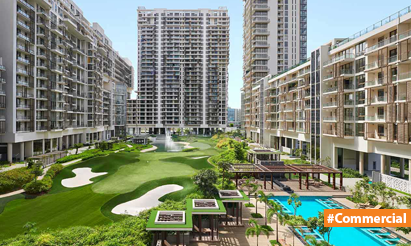A New Era of Urban Design: The Emergence of Biophilic Urbanism and its Benefits!
Biophilic cities are urban environments that integrate nature into their design, planning, and management to enhance the well-being of both people and the environment. They are becoming increasingly popular as cities seek to become more sustainable and resilient, especially in the face of climate change and urbanization.
Biophilic cities typically incorporate a range of natural elements, such as green roofs, public gardens, parks, and water features, into their design. They also focus on preserving and restoring natural habitats, such as wetlands, forests, and rivers, within and around the city. These elements provide numerous benefits, including improved air and water quality, reduced urban heat island effects, and enhanced biodiversity.
Biophilic cities also prioritize human connections to nature, recognizing the numerous health and well-being benefits that result from exposure to natural environments. They promote and encourage outdoor activities, such as walking, biking, and gardening, and encourage the use of natural light, materials, and colors in buildings and public spaces.
Overall, biophilic cities are more sustainable and resilient because they prioritize the health and well-being of both people and the environment. They provide numerous benefits, including increased social cohesion, enhanced biodiversity, and improved air and water quality. As cities continue to grow and face new challenges, the biophilic approach offers a promising solution for creating more livable, sustainable, and resilient urban environments.
Biophilic urbanism is an approach to urban design that integrates natural elements and systems into the built environment to create more sustainable and livable cities. Here are some benefits of biophilic urbanism:
- Improved public health: Biophilic urbanism can improve public health by reducing air and water pollution, providing spaces for physical activity, and promoting mental well-being through exposure to nature.
- Enhanced biodiversity: Biophilic urbanism can help preserve and restore natural habitats within cities, such as wetlands, forests, and rivers, which enhances biodiversity and contributes to ecosystem services such as pollination and pest control.
- Increased social cohesion: Biophilic urbanism can promote social cohesion and community building by providing spaces for social interaction and shared activities, such as community gardens and parks.
- Greater resilience to climate change: Biophilic urbanism can enhance the resilience of cities to climate change by mitigating urban heat island effects, reducing stormwater runoff, and providing shade and cooling through vegetation.
- Economic benefits: Biophilic urbanism can provide economic benefits, such as improved property values, increased tourism, and reduced healthcare costs due to improved public health.
- Improved aesthetics: Biophilic urbanism can enhance the aesthetics of urban environments by creating visually appealing and relaxing spaces, such as parks and green roofs.
Biophilic urbanism offers numerous benefits for cities and their residents. It provides a holistic approach to urban design that considers the well-being of both people and the environment, and it can help create more livable, sustainable, and resilient cities for the future.
Disclaimer: The views expressed above are for informational purposes only based on industry reports and related news stories. PropertyPistol does not guarantee the accuracy, completeness, or reliability of the information and shall not be held responsible for any action taken based on the published information.




